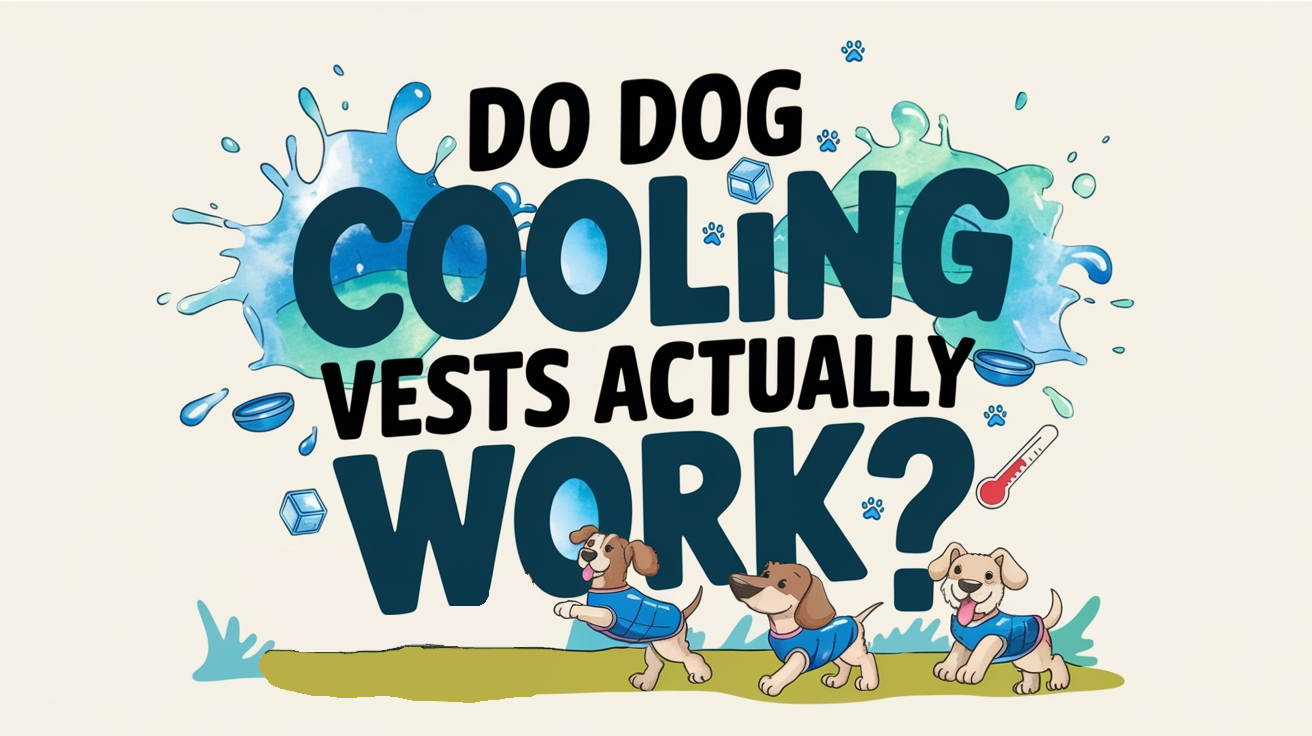As you stand at the crossroads of preparation, deciding whether a collar or a harness suits your dog best for a camping trip is crucial. You’re striving to ensure your canine companion’s comfort and safety as they join you in embracing the wilderness.
While collars offer the simplicity of a well-trodden path, harnesses promise a journey with less tug on your dog’s throat, especially when the trail gets rough. You want to choose gear that serves your dog’s needs, balancing ease of use with health and control considerations.
This guide will help you weigh the advantages of each option, ensuring your decision enhances your shared outdoor experiences. Let’s walk through the considerations together, so you can lead your faithful friend on a camping adventure with confidence and care.
Harness Advantages for Camping
If you’re camping with your pet dog, a harness can provide important benefits for both safety and comfort.
A harness is likely to prevent neck injuries or back strain if your dog tends to pull, as its design helps distribute pressure across the body more evenly.
Harnesses also tend to be more secure, which decreases the likelihood of your dog escaping during your outdoor activities.
Pros and Cons of Dog Harnesses
You’ll find that a dog harness offers several advantages for camping, such as increased security and comfort. When you’re looking to provide the best care for your dog in the great outdoors, consider these emotional benefits of using a harness:
- Safety First: A snug harness keeps your companion securely by your side, preventing the heartache of a lost dog.
- Health Matters: By evenly distributing pressure, a harness safeguards your dog from neck injuries and breathing issues.
- Controlled Freedom: Enjoy peace of mind as your dog explores, knowing you have gentle control with a harness.
- Comfort Counts: A well-fitted harness allows your dog to move freely without discomfort, ensuring a joyful camping experience for both of you.

Collar Benefits for Outdoors
When you’re out camping with your dog, a collar can be a simple and effective way to keep them identified and secure. Collars are easy for you to snap on and off, and they offer a variety of styles to suit your dog’s needs, whether they’re a puller or have sensitive skin.
However, it’s important to weigh the pros and cons, such as the ease of escape versus the convenience of quick leash attachment, to ensure your dog’s safety and comfort while exploring the great outdoors.
Types of Dog Collars
- Flat Collars: Flat collars are the most basic and commonly used type of collar for dogs. They are made from nylon or leather and have a buckle or snap closure. These collars are suitable for everyday use, identification tags, and attaching a leash.
- Martingale Collars: Martingale collars, also known as limited-slip collars, are designed to prevent dogs from slipping out of their collars. They have an extra loop that tightens when the dog pulls, ensuring a snug fit without choking or causing discomfort.
- Other types of collars, such as choke chains, prong collars, and head collars, are commonly used tools for dog training and control. However, it is important to note that these types of collars are not recommended due to the potential for causing injuries to a dog’s neck and throat.

Considering the various types of dog collars available, it’s important to weigh up their unique benefits for outdoor and camping activities. When you’re helping your dog gear up for an adventure, consider these factors:
- Safety First: A secure collar means your dog won’t easily slip away and get lost in unfamiliar terrain.
- Comfort Matters: Opt for a collar that won’t irritate or harm your dog, ensuring a joyful outdoor experience for both of you.
- Identification is Key: A collar with tags can swiftly reunite you with your dog if they wander off.
- Training Tool: Proper collars aid in managing your dog’s behavior, keeping them safe around wildlife and other campers.
Choose a collar that serves your dog’s needs while also safeguarding their well-being and your peace of mind.
Pros and Cons of Collars
Collars are a common choice for dog owners, but it’s important to look at the benefits and drawbacks before you go on a hike with your dog.
Collars make it simple to clip on a leash and are ideal for carrying identification tags, which are essential in nature. They’re also more comfortable for a dog to wear for extended periods.
On the downside, if a dog is prone to pulling, a collar may put too much pressure on their neck, which could lead to discomfort or harm. It’s crucial to make sure the collar fits properly; if it’s too loose, your dog might escape, but if it’s too tight, it could be painful.
Consider these aspects thoughtfully to ensure your dog’s safety and happiness.
Safety Considerations
Your dog’s safety should be a top concern as you select the appropriate collar or harness to minimize the risk of injury during your camping trips. While you’re enjoying the night sky, it’s important to ensure that your dog is comfortable and safe. Here are some important safety considerations to keep in mind:
- Prevent Escape: Make sure the gear fits properly to stop your dog from escaping and potentially getting lost in unfamiliar surroundings.
- Avoid Injury: Look for a design that doesn’t apply excessive pressure to your dog’s throat or back, particularly if they’ve a habit of pulling.
- Maintain Control: Choose a product that lets you keep control without jeopardizing your dog’s safety, especially near wildlife or in steep terrain.
- Enhance Visibility: Reflective materials or additional lighting can make your dog more visible at night, helping to prevent accidents.
Putting your dog’s needs first ensures a safer environment for them to discover and experience the great outdoors with you. Their comfort and security are crucial for your peace of mind while you both enjoy the wilderness adventure.
Comfort and Control Factors
During your camping adventures, it’s important to select a collar or harness that ensures your dog’s comfort while providing the control you require. A properly fitting collar is simple to use and allows for fast leash attachment.
However, if your dog tends to pull hard, a harness may be a better option as it spreads the pressure over a wider area of the body, lessens stress on the neck, and improves control.
For dogs that behave well on a leash, a flat or rolled collar might be adequate, as it provides comfort without sacrificing control. On the other hand, a dog that’s still learning leash etiquette might gain from a front-clip harness that helps to discourage pulling.
Make sure the harness fits closely without causing chafing or restricting movement, because an ill-fitting harness can lead to discomfort or injury over time.
Your dog’s comfort is crucial. Consistently check the fit of your chosen option, making changes when necessary. Your careful attention ensures your dog enjoys the camping trip as much as you, without discomfort or excessive restraint affecting the fun.
Making the Right Choice for Dog Camping
When choosing between a collar and a harness for your dog’s camping trip, consider your dog’s behavior, size, and any health issues to ensure their safety and comfort. You’re not just picking a piece of gear; you’re selecting a safeguard for your dog’s well-being while embracing the great outdoors.
To guide you in making a heartfelt decision that serves your dog’s best interests, keep the following in mind:
- Safety First: If your dog is an escape artist or easily distracted, a harness may offer better control and prevent a heart-wrenching chase through unknown terrain.
- Health Matters: Dogs with respiratory issues or delicate necks need a harness to avoid undue pressure, ensuring they can breathe easily and enjoy every sniff and sight.
- Size Counts: For small dogs, a harness can distribute pressure more evenly across their body, preventing injuries and providing you peace of mind as they scamper and explore.
- Behavior is Key: If your dog tends to pull, a front-clip harness can gently discourage this habit, making your journey together more harmonious.
Conclusion
So, you’re gearing up for the wild with your pal. A harness trumps a collar in the great outdoors, offering superior control and comfort, easing neck strain, and boosting safety.
Yet, don’t dismiss the collar’s convenience for ID tags. Weigh the pros and cons, consider your dog’s needs, and choose wisely.
Whether it’s a harness or collar, ensure your buddy’s tail keeps wagging under the stars.



